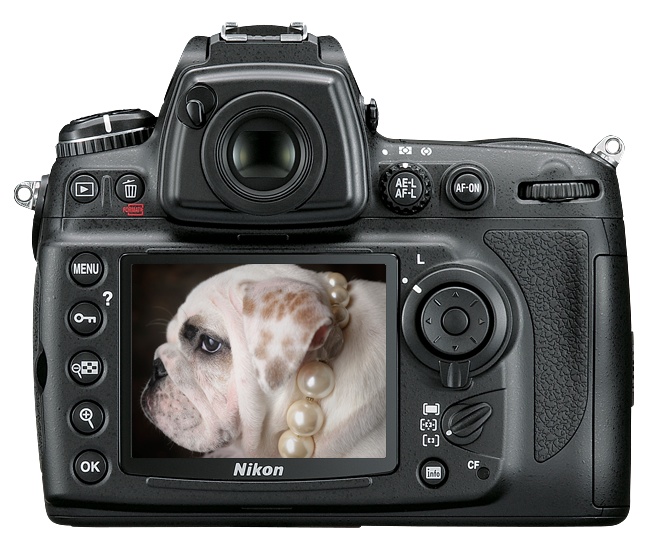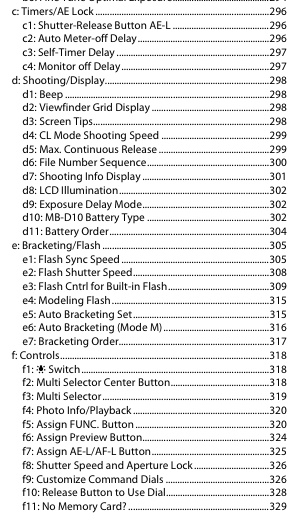An opportunity.
The digital camera is the most complex consumer device made. Not complex as in lots of parts from disparate manufacturers, like a car, but complex in the sense that the combination of buttons, menus and control dials results in millions of potential combinations.
I am a huge believer in learning all the functions of my cameras, as this enhances my ability to choose which to set-and-forget and which I need in daily use. If you don’t know what’s available you cannot make this decision correctly. A good user manual is key to this learning process.
There are but two models for gadget manuals out there. I call the first the Arrogant Model, typified by the near complete absence of instructions shipped with any Apple gadget. The arrogance stems from the belief that “our gear is so simple to use that no instructions are needed”. This results in a user who is so clueless about leveraging his investment that his smart phone become as dumb as its owner. Apple does a superb manual for the iPhone, for example, but good luck trying to find it. And speaking of dumb, the other manual model is indeed the Dumb Model, used by everyone else. (OK, there’s also the Bauhaus Model where you retain some unemployed graphics art student to illustrate everything with line drawings which are unintelligible in any language. You save the translation fees and insult your buyer in the process. No repeat sales for you).

The D700. A study in complexity. British Bulldog sadly not included.
I always get a kick when I see that ridiculous question mark at left.
I am stuck with the Dumb Model. With a view to getting a jump on things, while my Nikon D700 is subjected to the tender mercies of UPS, I downloaded the User Manual from Nikon or, more correctly, the three manuals they offer, two being addenda. What prompted this action was that in many of the secondhand sale listings snaps I perused before plonking down my cash, there was the ominous presence of not one but two thick paperbacks. This suggested there’s a lot going on here and the main download confirmed my fears, coming in at no less than 444 pages. As I recall the pocket booklet for the Canon 5D was all of 50 pages or so. Yes, it was poor, but 50 pages of bilge pump imitation beats 444.
First there’s the obligatory dozen pages from scummy lawyers telling you not to feed the baby discharged batteries. When will companies learn that this nonsense never keeps them out of court? Cynically labelled ‘For Your Safety’ (meaning ‘Screw you if we screw up’) these come in handy in the event of a toilet paper shortage. And the rest is predictably awful, a dry recitation of each control, sorted by button or menu choice.

The D700 manual. How not to write a user guide.
There is no thought of activity- or goal-based learning here. Button A does this, dial B that, and so on. And it’s not like I’m singling out Nikon. The manuals for the Panny G1 and G3 are comically inept, in addition to being authored in Chinglish. Between 200 and 300 pages long, I have yet to figure out why the AE lock button assignment in my G3 refuses to ‘stick’ between uses, no thanks to the manual. Coincidentally, our TV is a Panasonic (dollar loyalty, not brand loyalty) and the manual is no less than 60 pages, clearly from the same Shakespearean. And this for a product with a 42″ screen and speakers, crying out for an interactive on-screen narrated guide. (The manuals for the old film Leica M cameras were great but, then again, it doesn’t take Einstein to explain a shutter dial, a focus and aperture ring and wind and film rewind levers. And the Germans have been practicing their English for most of the past century, so it was pretty good).
Maybe the lack of good camera manuals is the result of everyone’s being so awful that there’s no need to compete and run up costs, yet I cannot but think that there is a great profit opportunity here for the smart manufacturer. The dictates are simple:
- Hire someone whose native language is English (immigrants are a good bet as they generally have better grammar)
- Make sure he is a great photographer (so that rules out all the fanboy sites)
- The author has to be a skilled technical writer (which rules out 99+% of English speakers)
- All marketing people excluded
- Absolutely no lawyers allowed
- All legal disclaimers printed on a roll of toilet paper, shipped separately to the buyer
- Pay the author $100,000 for 3 months’ work
- Make all design engineers available to the writer at his beck and call
- Add professional videos and ship these on a free flash card with every camera
- Add interactive help files to the LCD screens found in every digital camera
- Fly out the usual
whoresreviewers from NYT, WSJ, Time, etc. first class to the factory – just like Apple does - Waste no time marketing to the fanboy sites. They are sold already.
- Be sure the members of the Fourth estate are given two of everything free – one for the journalist, the other to sell tax free
- Call the gifts ‘Long term loans’ to avoid any ethical issues***
- Provide them with whatever extra curricular activities they desire – look, these are gear reviewers who cannot get a date
- Bask in the glory of your paid copy. “Canikolypuji revolutionizes user friendly camera design”
- Clean up at the cash register
*** Tricky one that. When companies like Olympus can engage in a decade long fraud that makes the boys at Enron look like pikers, ethics may well be a tough concept to grasp.
As author, a writer/photographer of the caliber of a Martin Evening is what is called for here. If you cannot take pictures you have no business writing camera manuals. And if you can write well there’s no reason to think you can take pictures. The writer must be adept at both.
OK, so what with the author’s fee, the dancing girls, five star accommodation and related production costs, you are out $500k for a series of guides for your 5 camera DSLR range, say. Your gross margin is 30% so you have to sell another $1.5mm in hardware just to break even. At an ASP of $750 you have to pick up 2,000 conquest sales from the competition. Doesn’t seem so hard now, does it? And each additional sale thereafter falls straight to the bottom line.
Meanwhile, I’m back to jumping around the 444 page wonder from Nikon in the hope I might actually figure out how to use this complex computer that just happens to make photographs, before it darkens the front porch.